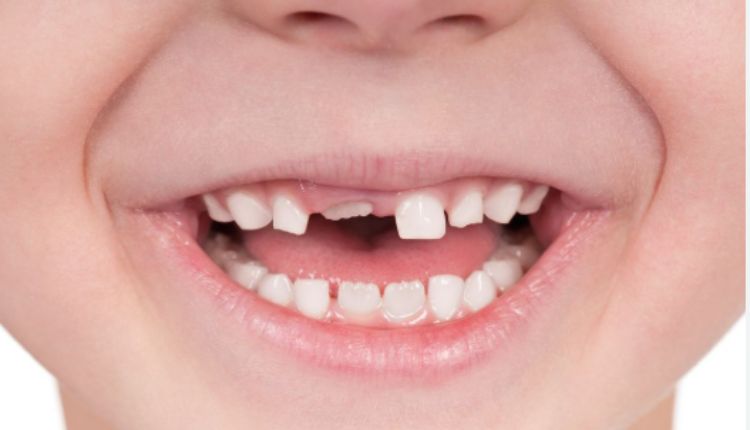When my daughter winced while brushing and said her gums “felt weird,” I chalked it up to a loose tooth or maybe her brushing too hard. But a couple of days later, I noticed bleeding around her gums and a not-so-fresh smell on her breath. That’s when I realized something was off—something more than just typical childhood tooth troubles. After a quick visit to our dentist, the diagnosis was clear: early-stage gum disease, or gingivitis. Thankfully, we caught it early, and with a consistent gum disease treatment plan—including professional cleanings and better brushing habits—her gums returned to a healthy state within weeks.
Most parents don’t associate gum disease with kids, but it’s more common than we think. The good news is, if you catch it early, gum disease in children is completely treatable—and often reversible. In this post, we’ll walk through what causes it, what to look for, and how to take action before it becomes a serious problem.
Understanding the Real Causes of Gum Disease in Children
Gum disease, or periodontal disease, begins when plaque builds up at the gumline. For children, this usually happens due to inconsistent oral hygiene. Kids often don’t brush long enough, may skip flossing, or aren’t supervised as closely as they should be—especially as they start brushing on their own. Plaque eventually hardens into tartar, which inflames the gums and leads to early gum disease.
However, oral hygiene isn’t the only factor. Some children are genetically predisposed to gum issues. Others develop problems due to mouth breathing (which dries out gum tissue), orthodontic devices like braces that trap food particles, or even immune system issues that affect how the body fights infection. Hormonal shifts in preteens and teens can also make the gums more sensitive, increasing the risk of inflammation and bleeding.
A sugary diet, frequent snacking, and poor hydration only add fuel to the fire. It’s a perfect storm—one that can be prevented with a little awareness and consistency.
Spotting the Early Signs of Gum Trouble
The earliest stage of gum disease is gingivitis. At this point, symptoms might be subtle. Gums may look a little puffy or red, and brushing might cause slight bleeding. Kids might say their gums feel “itchy” or sore, or complain that brushing hurts. Some parents even notice bad breath that doesn’t go away, even with brushing and rinsing.
As gum disease progresses, symptoms become more obvious. Gums may begin to pull away from the teeth, teeth may appear longer, and kids might avoid brushing certain areas because it hurts too much. If left untreated, gingivitis can evolve into periodontitis, a much more serious condition that affects the bone and tissue holding the teeth in place.
Treatment Options: What to Do When You See the Signs
If you notice any of the above symptoms, the first step is simple: visit your child’s dentist. A professional cleaning can remove plaque and tartar that at-home brushing just can’t touch. The dentist may also recommend adjustments to your child’s brushing technique or suggest child-safe mouth rinses to reduce inflammation.
In some cases, deeper cleaning procedures such as scaling and root planing may be necessary, especially if tartar has formed below the gumline. These treatments sound intense but are common and quite effective at stopping gum disease in its tracks.
At home, consistency becomes the hero. Brushing should happen twice a day, for at least two minutes. Flossing should be a non-negotiable part of the nighttime routine, and it may help to make it a shared activity. Use a toothbrush with soft bristles or an electric model designed for kids. Make sure they’re using fluoride toothpaste and rinsing thoroughly afterward. If your child is old enough (usually 6+), an alcohol-free antimicrobial rinse can provide extra protection.
Can Gum Disease Be Prevented?
Absolutely. Prevention isn’t just possible—it’s totally doable. Start by making oral care a fun, normal part of everyday life. Kids mirror what they see, so if you brush and floss regularly, they’re more likely to do the same. Instead of treating oral care like a chore, turn it into a shared experience. Set a timer. Play a favorite two-minute song. Let them pick out their toothbrush. And keep up with regular dental check-ups at Nuffield Dental—every six months is the general rule. Their team is fantastic at making kids feel comfortable and teaching them the importance of maintaining a healthy smile.
Nutrition also plays a role. Limit sugary snacks and drinks, and encourage crunchy fruits and veggies like apples and carrots that naturally clean teeth while being chewed. Staying hydrated helps maintain saliva flow, which protects against bacteria buildup.
Even more important than any one tip? Be patient. Habits take time to build, and setbacks happen. What matters most is staying consistent and supportive through the learning curve.
Conclusion
Gum disease may sound like a grown-up problem, but it’s surprisingly common in children. The upside? It’s one of the most preventable and treatable conditions out there—if we catch it early and act consistently.
By watching for the signs, staying engaged in your child’s oral care, and working closely with their dentist, you can stop gum disease in its tracks. These small actions today can save your child from bigger dental problems tomorrow—and help build a foundation for a lifetime of healthy smiles.
And as a parent, there’s something powerful in knowing that you’re not just teaching them to brush their teeth—you’re teaching them to take care of their health and wellbeing from the inside out.
Frequently Asked Questions
Can children really get gum disease?
Yes, especially if their brushing and flossing routines aren’t consistent. The early stage, gingivitis, is quite common in kids—but it’s reversible when caught early.
My child’s gums bleed during brushing—should I be concerned?
Occasional bleeding can happen if brushing too hard. But if it’s frequent or accompanied by swelling, soreness, or redness, it’s time to see a dentist.
Is flossing really necessary for kids?
Absolutely. Flossing cleans between teeth where the brush can’t reach. It’s key to preventing plaque buildup, which is the root cause of gum issues.
Can baby teeth have gum disease?
Yes, and gum disease in baby teeth can affect the health of incoming permanent teeth if not treated early.
How soon should I take my child to the dentist?
Ideally, you should schedule a visit at the first signs of gum discomfort, swelling, or bleeding. Regular checkups every six months help spot issues early.






